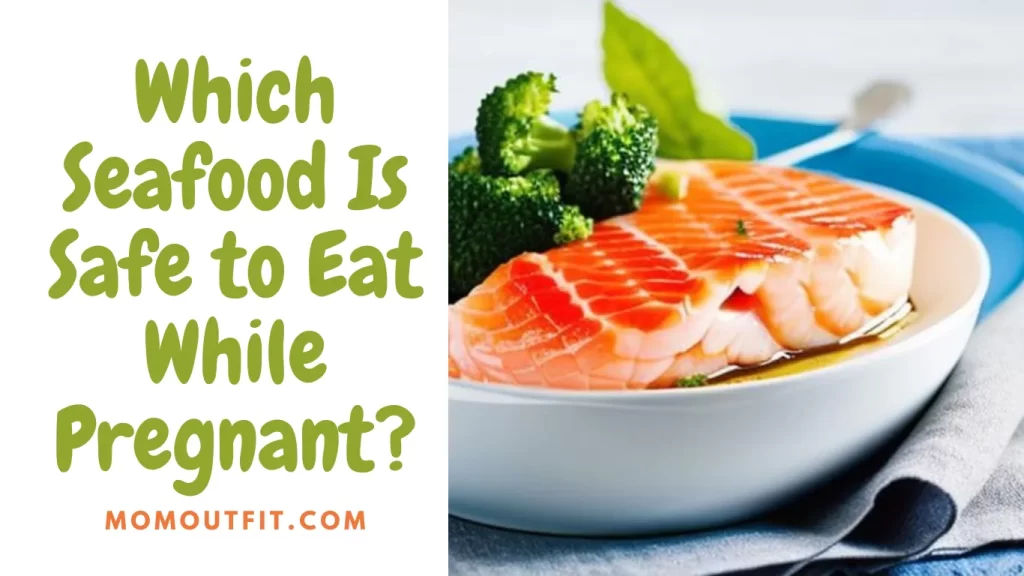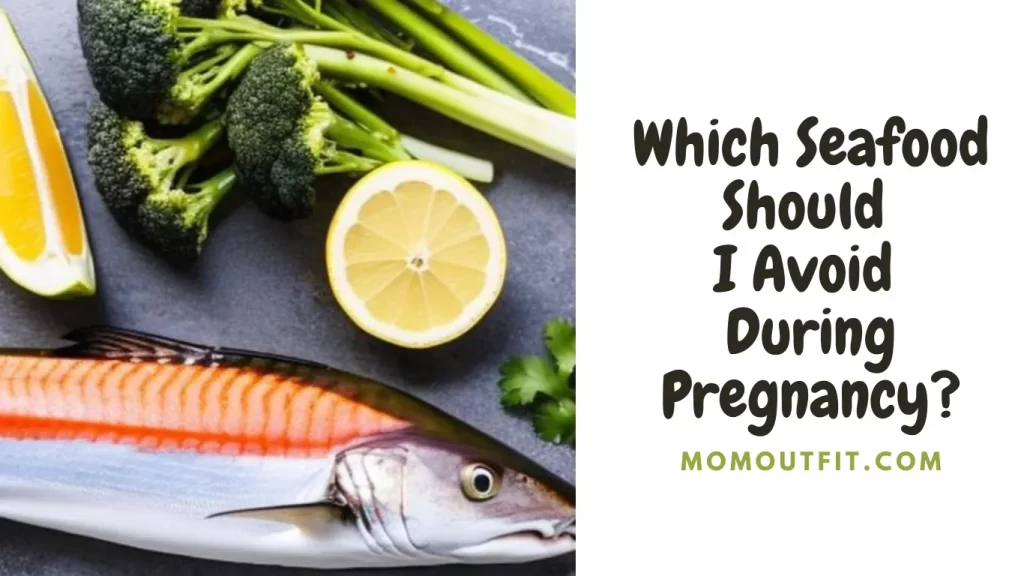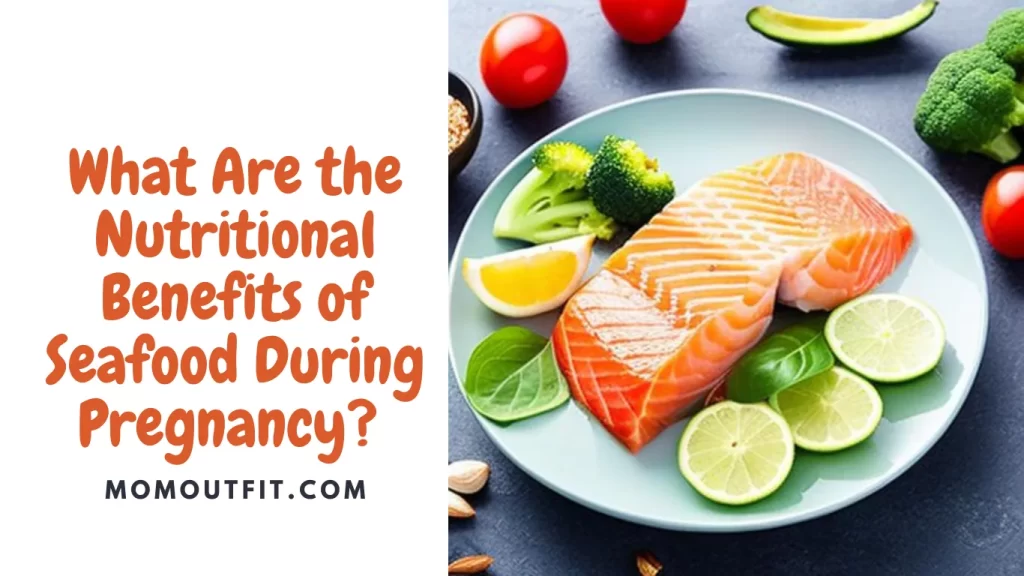Are you going to have the cutest child soon? Then, you must maintain a good diet. Then, you can add seafood to the list. Seafood is a rich source of nutrients and essential fatty acids. But do you know which seafood is safe to eat while pregnant?
During pregnancy, seafood intake becomes even more crucial. It provides numerous benefits for both the mother and the developing fetus.

However, if you consume certain types of seafood, you may have a lousy health impact. It is because of the potential exposure to mercury and pathogens. So, you should know which seafood you should have or not.
This blog aims to deliver an overview of the benefits of seafood during pregnancy. Also, I have discussed the risks associated with consuming specific seafood. The bonus part will be the guide on how to make safe and nutritious seafood choices during pregnancy.
Which Seafood Should I Avoid During Pregnancy?
High mercury seafood:
- Swordfish
- Shark
- King mackerel
- Tilefish
Mercury is a neurotoxin. It has harmful effects on the developing nervous system of the fetus. Hence, fishes like swordfish, sharks, king mackerel, tilefish, etc., are at the top of the food chain. They can accumulate high levels of mercury in their bodies.
You should avoid eating these foods during pregnancy or at least limit them to a maximum of once a month. Fishes like tuna, marlin, and orange roughy are also consumed in moderation. You should not have them not more than two servings per week.
Raw or undercooked seafood:
- Sushi
- Oysters
- Clams
- Crab
I am not stopping you from eating these foods above. But avoid eating them raw or undercooked. These types of seafood can harbor harmful bacteria and viruses that can cause foodborne illnesses. However, cooked seafood is safe during pregnancy if cooked to the appropriate temperature.

Sushi is a popular Japanese dish that often contains raw fish or shellfish. Usually, some types of sushi are cooked or made with cooked ingredients. But you should avoid any sushi that contains raw fish or shellfish.
Raw oysters, clams, and other shellfish can also contain harmful bacteria such as Vibrio, which can cause food poisoning. Again, crab meat should also be cooked thoroughly to avoid the risk of infection.
Smoked or pickled seafood:
- Smoked salmon
- Pickled herring
- Canned smoked seafood
You should avoid smoked or pickled seafood during pregnancy. These types of seafood are often preserved using salt. And salt can increase the risk of bacterial contamination.
The fishes mentioned above are typically preserved using smoking or pickling methods. These methods can increase the risk of contamination by Listeria. Likewise, Listeria is a type of bacteria that can cause severe illness in pregnancy.
Which Seafood Is Safe to Eat While Pregnant?
Low mercury seafood:
- Shrimp
- Salmon
- Tilapia
- Catfish
- Pollock
- Sardines
- Anchovies
- Trout
Till now, you have learned about seafood to avoid during pregnancy. Now, you will know which seafood you can consume freely. These types of seafood contain protein, omega-3 fatty acids, and other essential nutrients. These nutrients are vital for fetal development.
You can consume fish with lower mercury safely in moderate amounts during pregnancy. Shrimp, for example, is a low-mercury seafood. It also has sufficient protein and omega-3 fatty acids. Again, salmon is another excellent choice. You can get high omega-3 fatty acids and vitamin D levels from salmon.
Tilapia, catfish, pollock, sardines, anchovies, and trout are also safe options. You can include them as part of a healthy pregnancy diet.
Cooked seafood:
- Shrimp
- Crab
- Lobster
- Cooked oysters
- Cooked clams
- Cooked squid
- Cooked octopus
I assume you love all this seafood, but they should be well-prepped and cooked. Cooked seafood is a safe and nutritious option for mothers-to-be. Cooking thoroughly helps kill harmful bacteria and viruses in raw or undercooked seafood.
If you cook shrimp, crab, and lobster well, you can safely eat them. Similarly, cooked oysters, clams, squid, and octopus are also safe options if they are cooked thoroughly. Uncooked food items like these can increase the risk of foodborne illness.
Canned seafood:
- Canned tuna
- Canned salmon
- Canned sardines
Canned seafood is a prevalent type of seafood available in most grocery stores. You can add them to the pregnancy diet as a healthy part. After all, these foods are unique ways to add protein and omega-3 fatty acids to your diet.
Canned tuna is a low-mercury seafood with protein and omega-3 fatty acids. But you should choose canned light tuna over canned white tuna. Nevertheless, white tuna has higher levels of mercury.
Canned salmon is another safe option with omega-3 fatty acids of vitamin D. Similarly, canned sardines are high in omega-3 fatty acids and calcium.
It’s essential to choose canned seafood packed in water rather than oil. It can help to reduce your intake of unhealthy fats.
What Are the Nutritional Benefits of Seafood During Pregnancy?
Omega-3 fatty acids
“Our bodies don’t produce omega-3 fatty acids so we must get them through the food we eat.” (Source: Washington State Department of Health)
Omega-3 fatty acids, particularly DHA and EPA, are essential for fetal brain and eye development. These fatty acids are found in high amounts in seafood. Also, they are not easily obtained from other dietary sources.
A mother like you may have children with better cognitive development and visual acuity consuming sufficient omega-3 fatty acids. Also, you can
Eating seafood during pregnancy is associated with a lower risk of preterm birth and postpartum depression.

Protein
“Seafood is the only protein with Public Health England backed consumption guidelines.” (Source: Seafish)
Protein is required for building and repairing tissues, including those of the developing fetus. Then, seafood is a rich source of high-quality protein to ensure the developing fetus has adequate building blocks for growth and development.
In addition, protein is essential for maternal health. It can help to maintain healthy blood sugar levels, support the immune system, and promote healthy skin and hair.
You should aim to consume at least 70 grams of protein per day. So, seafood can be a valuable source of this important nutrient.
Vitamins and minerals
Seafood is a good source of several essential vitamins and minerals like vitamin D, B12, iron, zinc, and iodine. These nutrients are good for fetal growth and development and maternal health.
- Vitamin D is helpful for bone health and immune system function. Seafood is one of the few dietary sources of this vital nutrient.
- Seafood also contains Vitamin B12. It is essential for healthy nerve function and the formation of red blood cells.
- Iron is significant for forming red blood cells and delivering oxygen to the developing fetus.
- Zinc is essential for immune system function and wound healing.
- Iodine is crucial for thyroid function and fetal brain development.
How Can I Prepare and Cook Seafood Safely?
You should properly prepare and cook seafood to reduce the risk of foodborne illness. Some guidelines for safe preparation and cooking of seafood during pregnancy are:
Guidelines for cooking seafood
- Proper temperature: Cook seafood to a safe internal temperature of 145°F (63°C) to kill any harmful bacteria or viruses that may be present.
- Avoid cross-contamination: Keep the raw seafood separate from other foods. Use separate cutting boards and utensils to prevent cross-contamination.
Choosing seafood from reputable sources
- Look for sustainability certifications: Choose seafood certified by a reputable sustainability organization, such as the Marine Stewardship Council or the Aquaculture Stewardship Council.
- Buy from reputable fish markets and grocers: Purchase seafood from a trusted source with a good reputation for quality and freshness.
Safe storage of seafood
- Proper refrigeration and freezing: Store seafood at a safe temperature of 40°F (4°C) or below. Use or freeze it within 1-2 days of purchase. Frozen seafood should be kept at 0°F (-18°C) or below.
Safe handling and preparation of seafood
- Thawing frozen seafood: Thaw frozen seafood in the refrigerator or under cold running water, and never at room temperature to prevent bacterial growth.
- Cleaning and trimming: Clean and trim seafood properly before cooking, removing any visible dirt or debris, and discarding any parts that are not edible.
- Marinating: If marinating seafood, do so in the refrigerator, and discard any leftover marinade that has encountered raw seafood to avoid cross-contamination.
Cooking methods for seafood
- Baking: Baking seafood is a healthy and easy way to cook it. It can be done in the oven or on the grill. You should cook them at the proper temperature of 145°F (63°C) to ensure it is safe to eat.
- Boiling: Boiling seafood is a quick and easy way to cook it. It is perfect for cooking shellfish like shrimp and crab. Be sure to cook seafood in boiling water until it is fully cooked.
- Frying: Frying seafood can be a delicious way to cook it. But it is essential to use a healthy oil and avoid overcooking. Seafood should be fried until it is crispy and golden brown on the outside and fully cooked on the inside.
Final Words
Would you try seafood today?
Now, you know which seafood is safe to eat while pregnant. Of course, seafood is a nutritious and vital part of a healthy diet, particularly during pregnancy.
Avoid seafood with high levels of mercury, raw, or undercooked from consumption. Overall, a balanced and varied diet, including safe seafood options, can help support the mother’s and developing fetus’s health.
Thanks for reaching out!

Born in Texas, Jennifer loves to spend time with her kids. Often, she shares her thoughts from the experience of being a mother. She focuses on surprising the Momoutfit readers with incredible information. Her vision is being a better mother, a visionary person.
